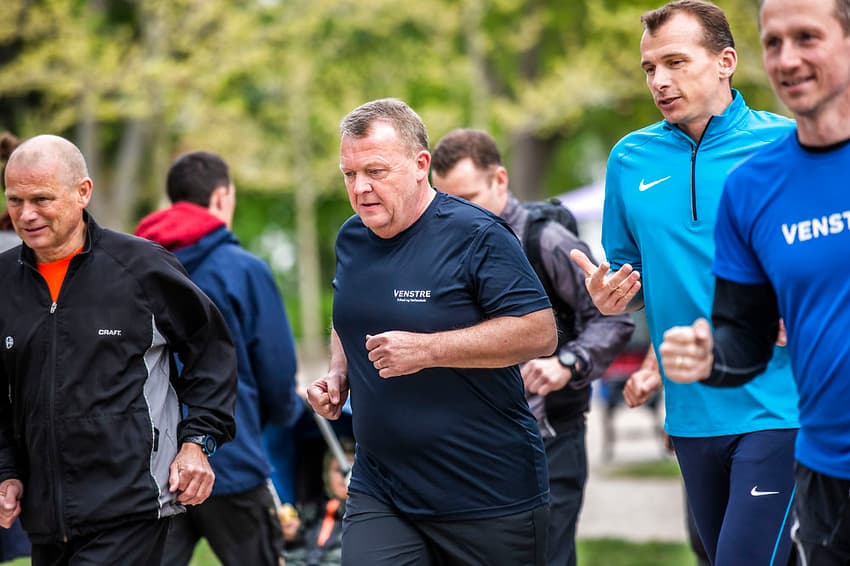General election: how realistic is Lars Løkke Rasmussen’s welfare promise?

Prime Minister Lars Løkke Rasmussen is leading his Liberal (Venstre) party’s election campaign, and one of the party’s core promises will increase public spending by 0.65 percent annually.
But that policy is not shared by current coalition government partners, the Liberal Alliance (LA) and Conservative parties.
LA wants to cut public spending, while the Conservatives are looking for zero net growth.
That makes Rasmussen’s promise to increase spending on welfare by 69 billion kroner look a difficult one to fulfil.
“I am here as the leader of the Liberals and am telling you the politics my party is campaigning on,” the PM after speaking at the Danish Chamber of Commerce in Copenhagen on the Wednesday.
“We are campaigning with an election promise to prioritise 69 billion kroner for welfare until 2025,” he said.
The coalition government’s joint policy is currently to limit the growth of public spending to 0.3 percent, which means that the Liberal election promise is not in line with that of the government.
The welfare spending policy is also strikingly similar to that of the opposition Social Democrats, who want to increase public spending by 0.7 percent annually. The Danish People’s Party, a right-wing ally of the government, also want to increase the state outlay, by 0.8 percent.
Additionally, both LA and the Conservatives want to cut tax, thereby making government funds tighter than they are today.
Rasmussen said he did not consider the obstacles insurmountable.
“I’m sure it will be fine. I have just been through a government term in which at one point I was told that, unless there were cuts to the top tax rate across the board, I’d be forced from office,” the PM said in reference to a demand which Liberal Alliance was unable to impose on the government in 2017.
The general election was called by Rasmussen on Tuesday, with voting scheduled for June 5th.
The PM’s promise of 69 billion kroner on welfare represents the first major throw of the dice on policy by the Liberals.
It will be spent on increasing social and healthcare staff to take care of children and the elderly, according to the party.
Social Democrat political spokesperson Nicolai Wammen expressed his scepticism.
“It sounds very hollow when (Rasmussen) decides to completely change his policies just a few weeks before the election,” Wammen said.
READ ALSO: More coverage of the 2019 Danish general election
Comments
See Also
But that policy is not shared by current coalition government partners, the Liberal Alliance (LA) and Conservative parties.
LA wants to cut public spending, while the Conservatives are looking for zero net growth.
That makes Rasmussen’s promise to increase spending on welfare by 69 billion kroner look a difficult one to fulfil.
“I am here as the leader of the Liberals and am telling you the politics my party is campaigning on,” the PM after speaking at the Danish Chamber of Commerce in Copenhagen on the Wednesday.
“We are campaigning with an election promise to prioritise 69 billion kroner for welfare until 2025,” he said.
The coalition government’s joint policy is currently to limit the growth of public spending to 0.3 percent, which means that the Liberal election promise is not in line with that of the government.
The welfare spending policy is also strikingly similar to that of the opposition Social Democrats, who want to increase public spending by 0.7 percent annually. The Danish People’s Party, a right-wing ally of the government, also want to increase the state outlay, by 0.8 percent.
Additionally, both LA and the Conservatives want to cut tax, thereby making government funds tighter than they are today.
Rasmussen said he did not consider the obstacles insurmountable.
“I’m sure it will be fine. I have just been through a government term in which at one point I was told that, unless there were cuts to the top tax rate across the board, I’d be forced from office,” the PM said in reference to a demand which Liberal Alliance was unable to impose on the government in 2017.
The general election was called by Rasmussen on Tuesday, with voting scheduled for June 5th.
The PM’s promise of 69 billion kroner on welfare represents the first major throw of the dice on policy by the Liberals.
It will be spent on increasing social and healthcare staff to take care of children and the elderly, according to the party.
Social Democrat political spokesperson Nicolai Wammen expressed his scepticism.
“It sounds very hollow when (Rasmussen) decides to completely change his policies just a few weeks before the election,” Wammen said.
READ ALSO: More coverage of the 2019 Danish general election
Join the conversation in our comments section below. Share your own views and experience and if you have a question or suggestion for our journalists then email us at [email protected].
Please keep comments civil, constructive and on topic – and make sure to read our terms of use before getting involved.
Please log in here to leave a comment.